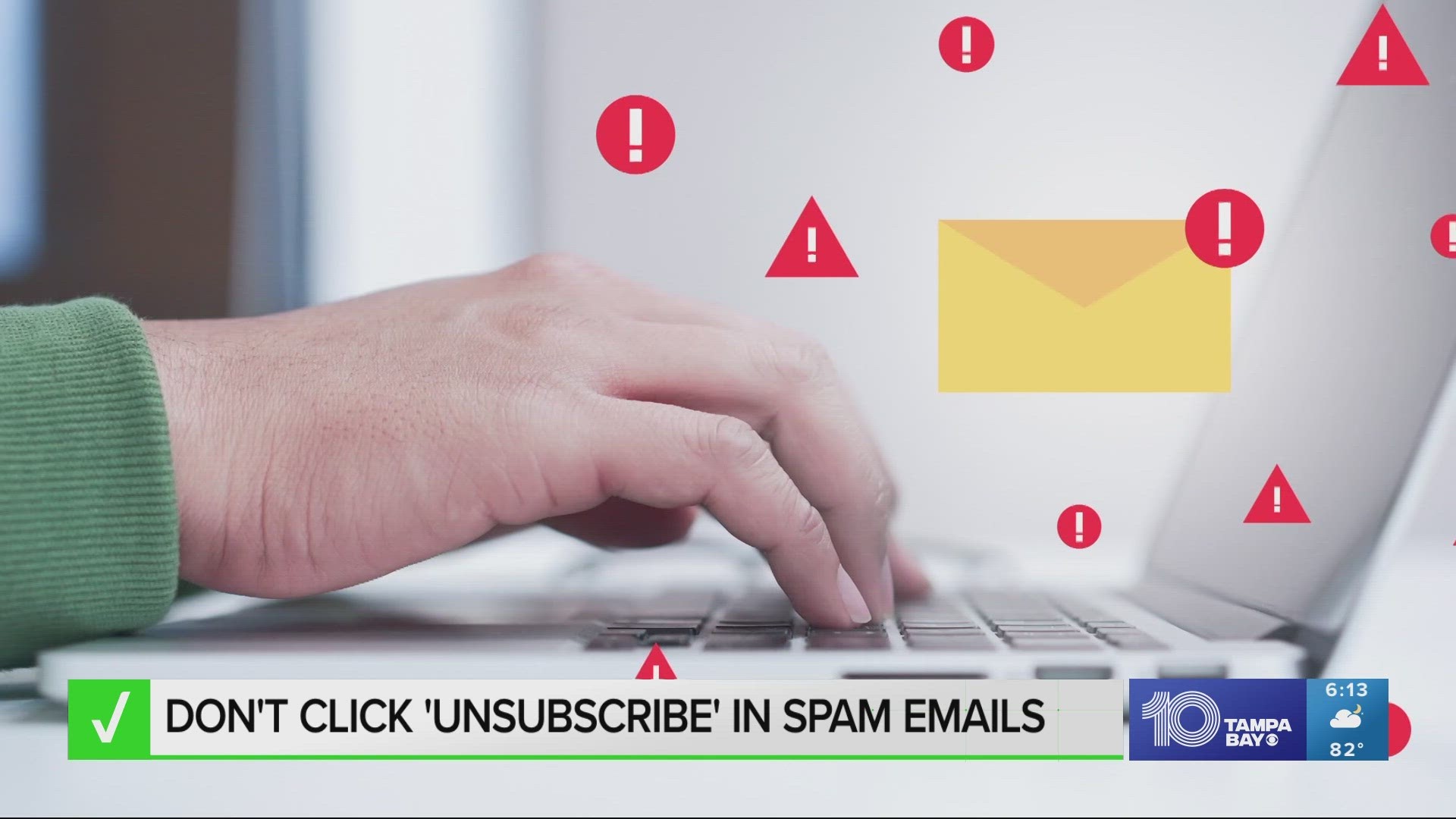ST. PETERSBURG, Fla. — Spam emails can be a daily occurrence that can quickly clog up your inbox.
The requirement on many websites that you enter your email address to register or complete a purchase opens you up to marketing newsletters and promotional communications.
Mary R. in Port Richey asked VERIFY if it’s safe to click the "unsubscribe" button usually found at the bottom of these emails.
THE QUESTION
Is it safe to click the "unsubscribe" button in spam emails?
THE SOURCES
- Federal Trade Commission (FTC)
- Erich Kron, KnowBe4 security awareness advocate
THE ANSWER
No, it’s not always safe to click the "unsubscribe" button in spam emails.
WHAT WE FOUND
Every day more than 6 billion spam emails are sent, according to Erich Kron, a security awareness advocate with the Clearwater-based IT cybersecurity firm KnowBe4.
But these spam emails fall into two categories.
Spam from reputable companies – like marketing emails that follow a recent purchase trying to entice you into buying other products – are usually safe. You likely gave permission to receive future promotional communications at the time of purchase.
The risk of hitting "unsubscribe" arises when that spam email unexpectedly appears in your inbox from a person or place you don’t know, Kron warns.
In those instances, clicking "unsubscribe" could open your inbox to more spam.
“That’s how these things work,” Kron said. “Now they know that you have a real email address that works, which is more valuable if they want to sell it to others.
In other cases, clicking "unsubscribe" could lead to a fake site trying to steal your personal information or install malware on your device. But Kron says they're less common because this approach usually requires the unwitting receiver to take more steps.
Kron’s advice: When in doubt, your safest route is to mark the email as "spam" in your email client and delete it.
Kron warns scammers often use the holidays to exploit people looking for good deals. Something that might seem too good to be true any other time of year could appear more realistic at a time when many retailers are known to offer deep discounts on big-ticket items.
The Federal Trade Commission (FTC) offers several recommendations for dealing with – and cutting down on – spam.
- Use your email account's filter: Your email account likely has a tool to filter out potential spam or at least funnel it into a junk email folder. Popular email providers like Gmail, Hotmail or Yahoo have strong spam filters by default.
- Limit your exposure: Use more than one email address – one for personal messages and one for shopping, newsletters, coupons, and other services.
- Don't display email addresses publicly: Don't leave them visible on social media sites or in online membership directories because spammers scan websites to harvest email addresses.
- Check marketing settings on websites: Different websites handle your privacy differently. When a website asks for your email address, pause and consider how the website might use your information.
- Report it: If you get an unwanted email, most email services include buttons to mark messages as junk mail or report spam. You can also report it to the FTC at ReportFraud.ftc.gov.

